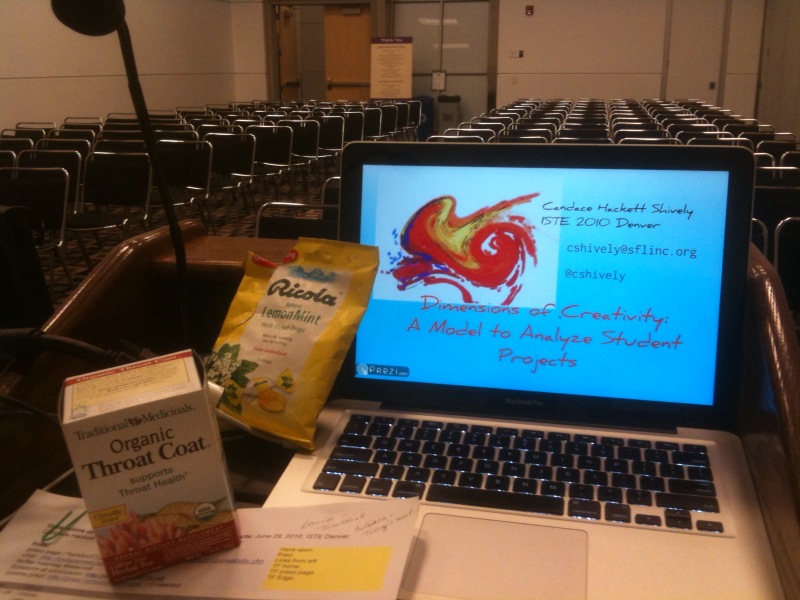Teaching and Creativity, Part 3: Originality’s river
Creative Fluency is a flow of ideas– more of tributary, really– but Originality is the full volume and force of the creative river. It has a mind of its own, and you can’t decide to simply “build” a river any more than you can force originality from your students (or yourself). Originality rises and falls on its own. You can try to bound it with dams and levees, but it eventually laughs at such efforts. And if there is no rain, you can’t force it to flow. It can dry up due to climate conditions or slow to a trickle. In fact, it often does dry up as the sediment of school and the sweltering heat of standardized expectations sear the very headwaters into vapor.
Originality is the one of the FFOE skills that can only be cheered and rewarded but can never be “produced.” We can recognize it, talk about how it might have happened, and even try to NOTICE the conditions that caused it so we might predict it at least as well as NOAA predicts flooding. Yup, that’s a river. It must have come up from last night’s thunderstorm. Do you suppose we’ll have more today?
Originality is risky, too. Some of the most original thinkers I have ever known suffer daily in their isolation out on the river. Think of news images of a lone soul stranded amid a river’s fury, clutching debris as they become part of the current.
Why do we need original thinkers? Please tell me you do not even ask this. No human-made object, invention, or artwork around us would be there if someone had not taken the risk to consider it as a possibility. Yet somehow we relegate originality to creative writing or art class. Most academic classes (and most jobs) secure dry land far from the river’s risks, then wonder why life dries up.
We can take students to the river’s edge by posing questions and juxtapositions to force flexibility and possibly enjoy results that are actually original. Place a curriculum concept or event into a different context and ask what would happen. Put a concept to a test by asking questions, using analogies, and making juxtapositions.
- What kind of adaptation could you imagine for a new animal living in the New York subways?
- What kind of invention could we use to make subways safer for human beings?
Even better, encourage students to ask these and better questions. And when you observe something original, celebrate it and ask how it happened. (Often it is the response that made the entire class laugh and may not have been entirely “appropriate.”) Where were you when you thought of that? Do you have great ideas like that a lot when you are [insert the place they mentioned]? What were you doing right before that? If you wanted to design a perfect place to think original thoughts, what would it be like? Does it have chocolate? Water? Music? What kind of light? Laughter? What time of day is it? Who else is there?
Originality is a river.
Modeling: I thought of this analogy while swimming, my best place for creative thinking, preferably before mid-day and outdoors. Original? Maybe, maybe not. But it sure feels good to think this way. I want others to feel this, too.
Where are the headwaters of your originality river?













